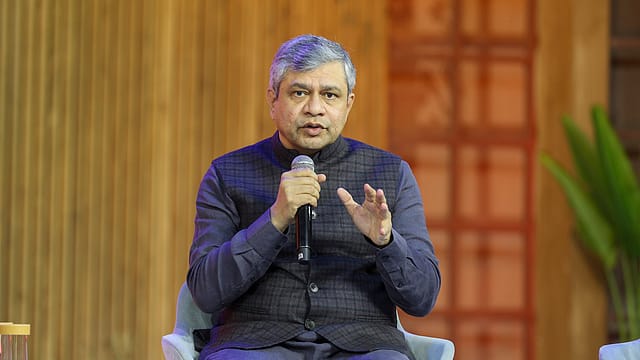Efforts are on to make India 6G leader: Ashwini Vaishnaw
ADVERTISEMENT

The government has released the 'Bharat 6G Vision Document' to design, develop and deploy 6G network technologies, Union Electronics and Information Technology Minister Ashwini Vaishnaw said in Parliament today.
The minister was speaking about India's plan for promoting 6G adoption and ensuring its widespread rollout across India. Vaishnaw says the government’s Bharat 6G Mission and Apex Council have laid down the phase-wise objectives for 6G. “...(They’ll) suggest the research and innovation pathways to be explored and review the progress of implementation of Bharat 6G Vision from time to time."
The minister says the Bharat 6G Alliance (B6GA), an alliance of domestic industry, academia, national research institutions and standards organisations, is working towards enabling India to become a leading global supplier of intellectual property (IP), products and solutions.
Notably, B6GA has also signed a memorandum of understanding with the US-based NextG Alliance to explore collaboration opportunities on 6G wireless technologies.
On the development front, Vaishnaw says under the Centre's Telecom Technology Development Fund (TTDF) Scheme, with 5% of annual collections from the Universal Service Obligation Fund for funding research & development of technologies, products, and services, two proposals for test beds have been approved.
These are 6G THz testbed through Consortium of Society for Applied Microwave Electronics Engineering and Research (SAMEER), IIT Madras, IIT Guwahati, and IIT Patna; and Advance Optical Communication testbed with consortium members as IIT Madras, IIT Delhi and other academic institutions.
January 2026
Netflix, which has been in India for a decade, has successfully struck a balance between high-class premium content and pricing that attracts a range of customers. Find out how the U.S. streaming giant evolved in India, plus an exclusive interview with CEO Ted Sarandos. Also read about the Best Investments for 2026, and how rising growth and easing inflation will come in handy for finance minister Nirmala Sitharaman as she prepares Budget 2026.
Additionally, the government has sanctioned 100 5G and beyond labs at academic institutions, across India, he says, adding that it'll make them 6G ready.
"India has contributed in International Telecommunications Union International Mobile Technology (IMT) 2030 framework, also called 6G by industry for inclusion of 'Ubiquitous Connectivity' as one of the six usage scenarios of 6G and coverage, interoperability and sustainability as capabilities of 6G technology," says the Union minister.
Prime Minister Narendra Modi, during the India Mobile Congress 2023 in October this year, had also said that India was not only expanding the 5G network in the country but also laying emphasis on becoming a leader in 6G.
On the prospects of the technology, Vaishnaw says 6G technology will be harnessed to address the country’s needs and improve connectivity. "It will provide newer avenues for economic and social development and employment opportunities."
Globally, no one country is fully ready for the 6G technology currently, however many are ahead in the race. China, with leaders like Huawei and ZTE, has emerged as the frontrunner in the race towards developing 6G technology. South Korea has also made significant strides in developing the technology. United States, Japan, and Finland are also actively conducting 6G research to explore the next phase of internet technology. Notably, India now ranks among the top three 5G-enabled nations, with over 125 million 5G users.
India has seen major improvement in telecom connectivity in the past decade, with mobile subscribers increasing from 90.45 crore in March 2014 to 114.84 crore in August 2023, the government data shows. The internet subscribers during the same period increased from 25.15 crore to 88.12 crore.
"As of September 2023, out of 6,44,131 villages in the country (village data as per Registrar General of India), around 6,16,300 villages are covered with mobile connectivity at a coverage of 95.7%," Vaishnaw says, adding the government has planned 41,160 towers in uncovered areas of the country to provide connectivity to over 54,000 villages at the cost of Rs 41,331 crore.
